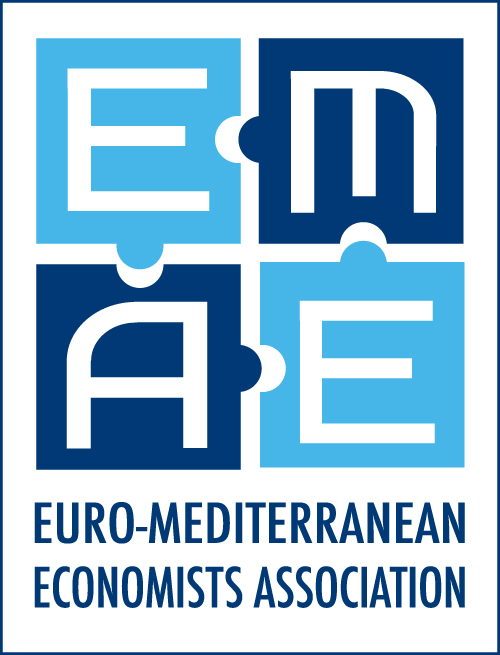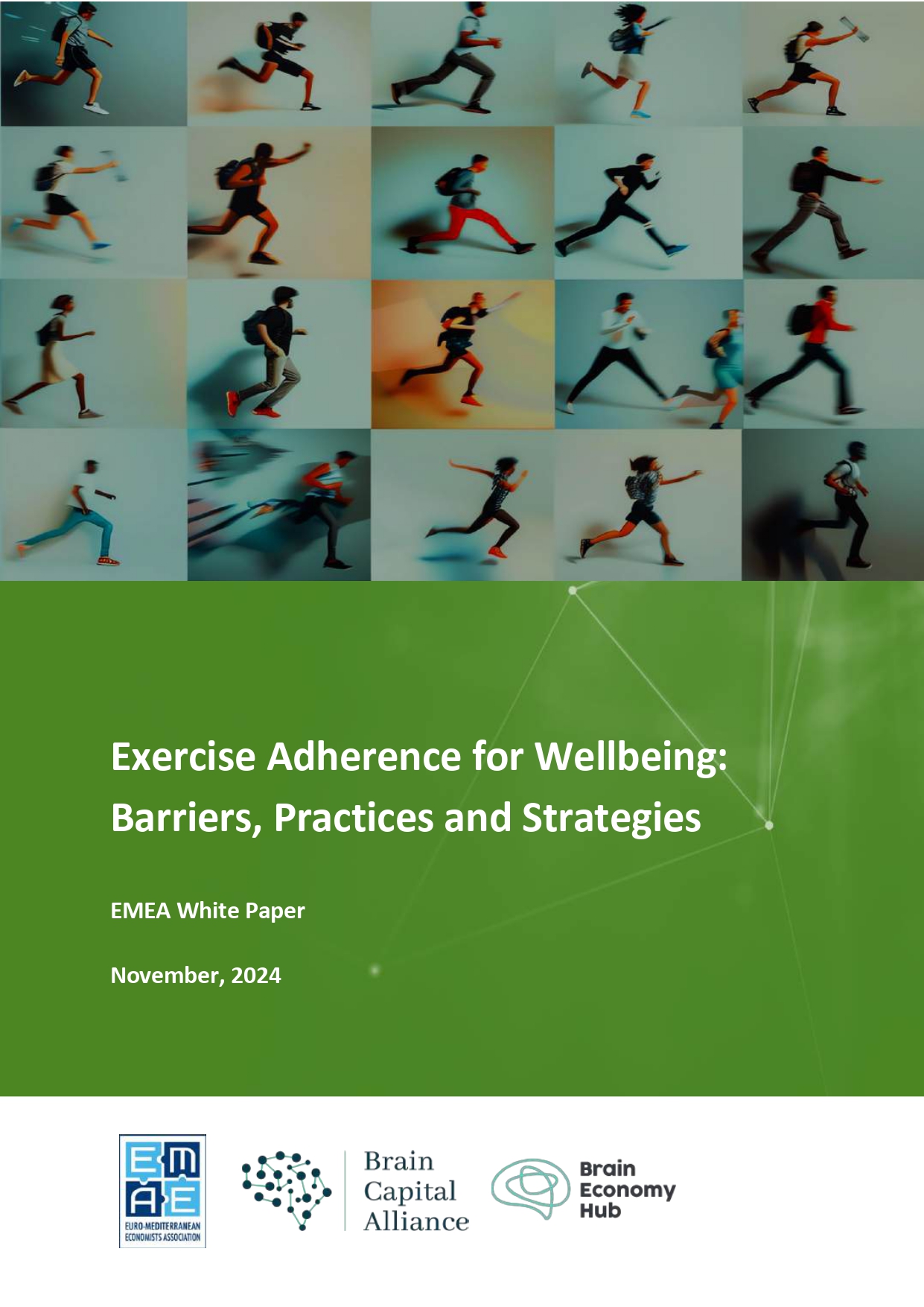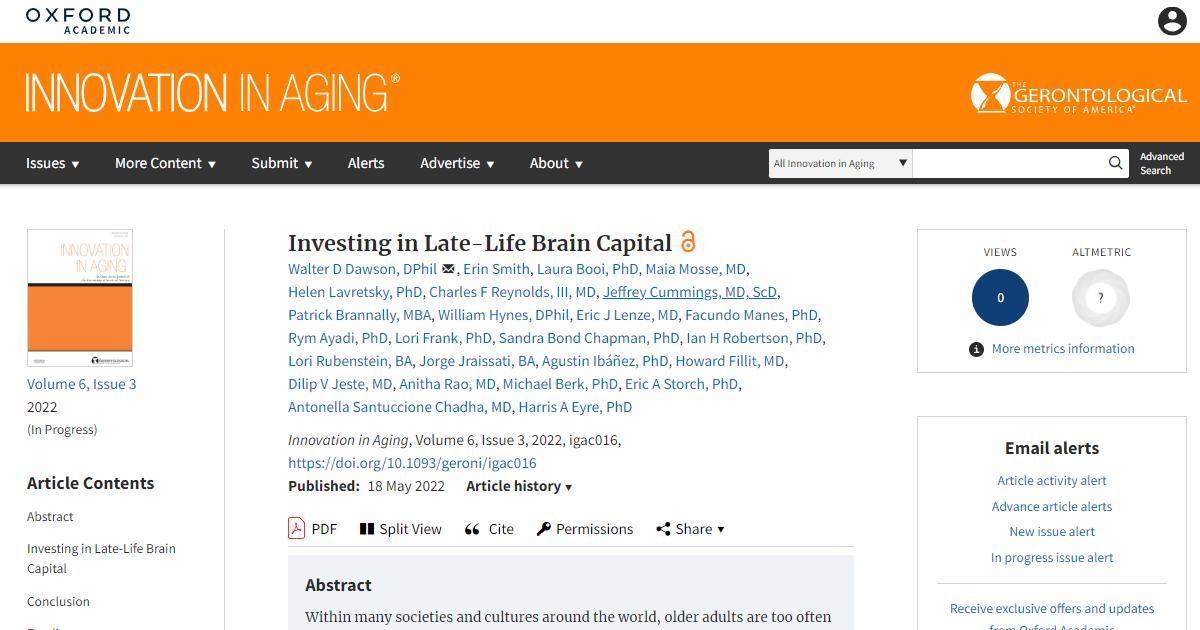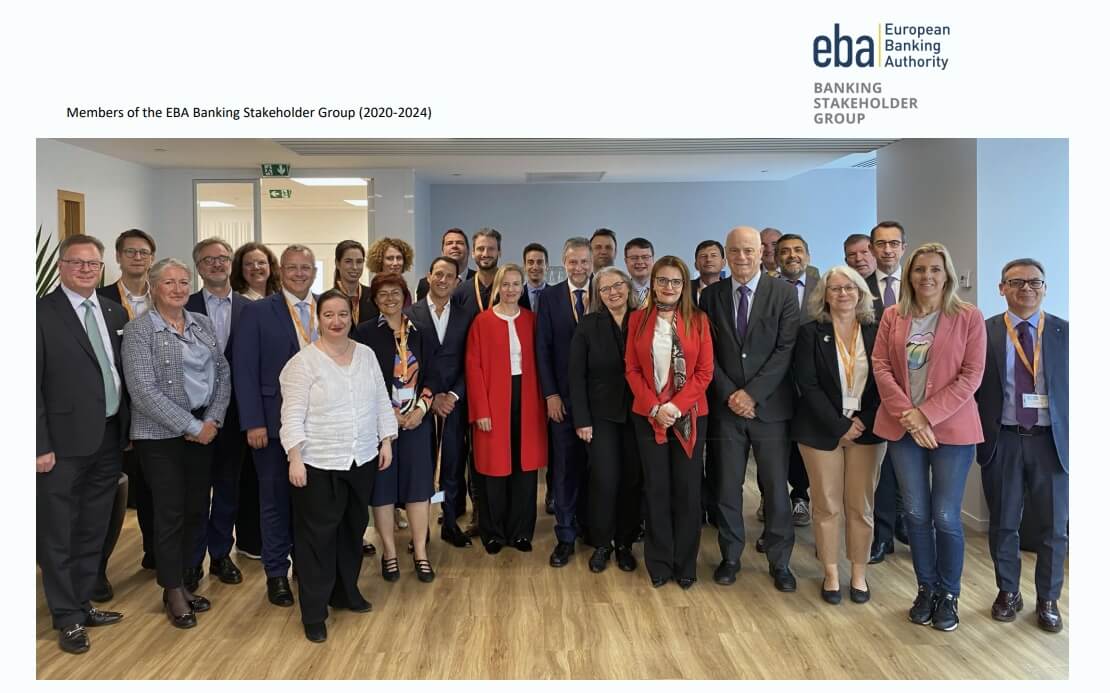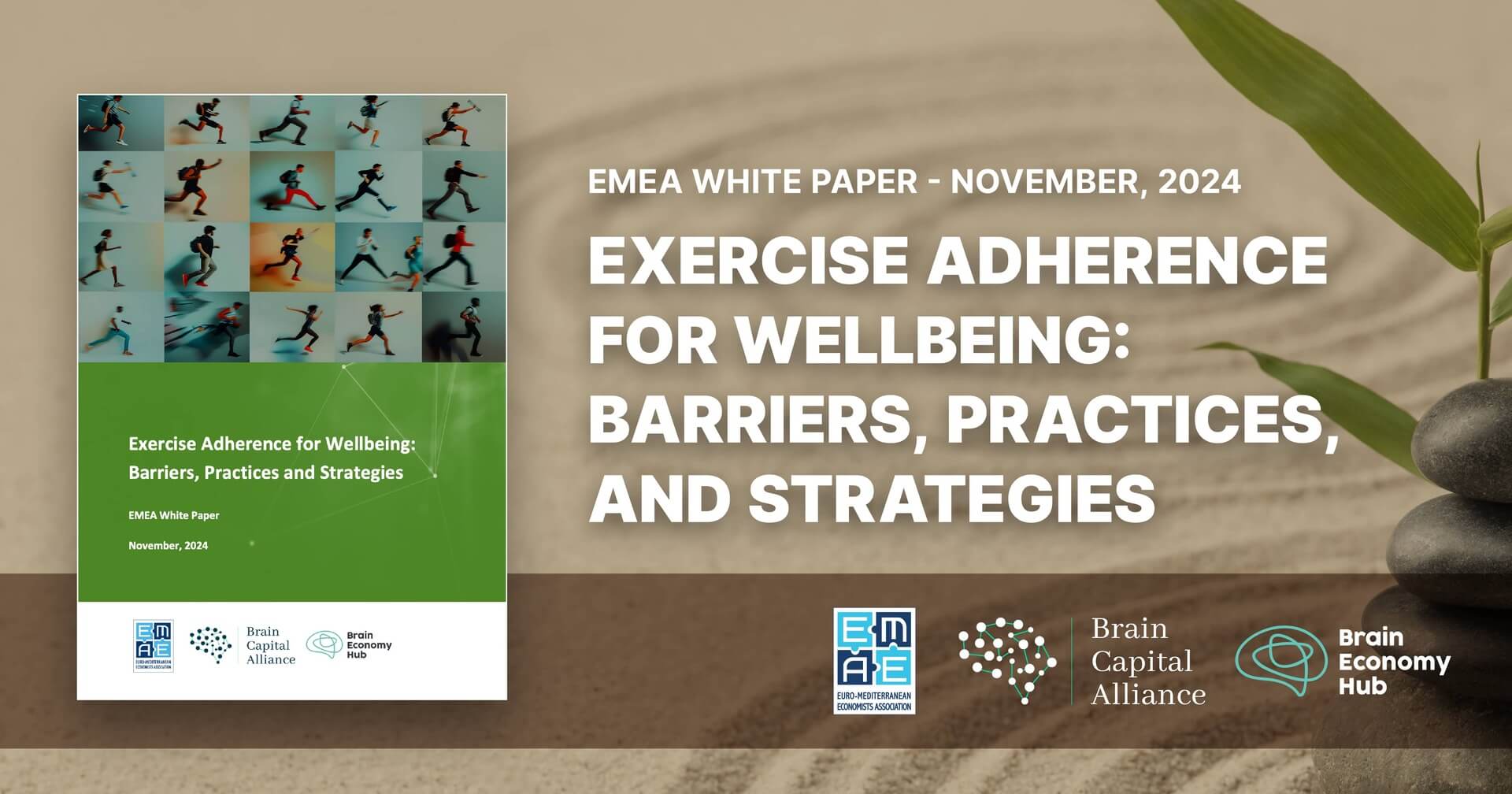We are happy to announce that the paper “Investing in Late-Life Brain Capital”, co-authored by EMEA President, Prof Rym Ayadi and EMEA Advisory Board member, Harris Eyre MD PhD, has been published by the Innovation in Aging academic journal (Volume 6, Issue 3, 2022)
Within many societies and cultures around the world, older adults are too often undervalued and underappreciated. This exacerbates many key challenges that older adults may face. It also undermines the many positive aspects of late life that are of tremendous value at both an individual and societal level. We propose a new approach to elevate health and well-being in late life by optimizing late-life Brain Capital. This form of capital prioritizes brain skills and brain health in a brain economy, which the challenges and opportunities of the 21st-century demands. This approach incorporates investing in late-life Brain Capital, developing initiatives focused on building late-life Brain Capital.
The paper is available at https://academic.oup.com/innovateage/article/6/3/igac016/6588300
Paper authors: Walter D Dawson, DPhil, Erin Smith, Laura Booi, PhD, Maia Mosse, MD, Helen Lavretsky, PhD, Charles F Reynolds, III, MD, Jeffrey Cummings, MD, ScD, Patrick Brannally, MBA, William Hynes, DPhil, Eric J Lenze, MD, Facundo Manes, PhD, Rym Ayadi, PhD, Lori Frank, PhD, Sandra Bond Chapman, PhD, Ian H Robertson, PhD, Lori Rubenstein, BA, Jorge Jraissati, BA, Agustin Ibáñez, PhD, Howard Fillit, MD, Dilip V Jeste, MD, Anitha Rao, MD, Michael Berk, PhD, Eric A Storch, PhD, Antonella Santuccione Chadha, MD, Harris A Eyre, PhD
Innovation in Aging is an open access journal of The Gerontological Society of America (GSA) that publishes conceptually sound, methodologically rigorous research studies that describe innovative theories, research methods, interventions, evaluations, and policies relevant to aging and the life course. Journal content reflects the wide-ranging research interests of GSA members.
GSA is the oldest and largest interdisciplinary organization devoted to research, education, and practice in the field of aging. GSA’s principal mission — and that of its 5,500 members — is to advance the study of aging and disseminate information among scientists, decision makers, and the general public. Its members come from more than 50 countries.
